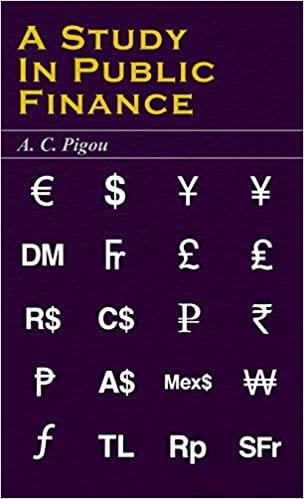
Problem 1. In general, a market-neutral strategy seeks to generate investment returns that are independent of the market environment. In order to cancel out the impact of fluctuations in the equity markets, the portfolio manager makes both short and long investments. In aggregate, the dollar value of the short investments, which pay off if a stock's value drops, will roughly equal that of the more traditional long investments, which appreciate if the stock price rises. If the market moves up, the losses in the shorts will be partly offset by the gains in the long investments. On the flip side, if markets fall, the shorts will provide a hedge against losses in the long positions. This strategy is also referred to as a "zero beta" strategy. This is because, since the portfolio is neutral to the overall market, the portfolio has no volatility or co-movement with the overall market. Suppose a fund manager has a portfolio of assets that is worth $60 million with a beta of 0.75 with respect to the Nasdaq index. To be simple, assume that the alpha and expense ratio of the portfolio are both zero. The manager is concerned about the performance of the Nasdaq market over the next three months and plans to use six-month mini futures contracts on the Nasdaq 100 to hedge the risk. The current level of the index is 5914. One contract of mini Nasdaq 100 futures is on $20 times the index. The risk-free rate is r=0.65% per annum. The dividend yield on the Nasdaq index is y=1.12% per annum. (a) What is the theoretical futures price for the six-month mini Nasdaq 100 futures? (b) If the fund manager ignores the mismatch between the futures maturity and the hedging period and simply uses the formula we discussed in class, how many futures contracts (round the number to an integer) will he long or short for the purpose of minimizing the exposure to the market over the next three months? (c) How much does the fund manager gain (lose) on his futures position if the market index in three months turns out to be 4731,5323,5914,6505, and 7097 ? List the profits and losses (P/L) corresponding each index level in a table. (d) Suppose there are no idiosyncratic shocks to the portfolio returns. (This is true if the portfolio only consists of the index and three-month Treasury bills.) Calculate and report the P/L of the portfolio when the index finishes in three months at the five levels listed in question (b). To simplify the calculation, you can approximate the simple k-month dividend yield by y(k/12), i.e., ignore the effect of continuous compounding. Similarly, approximate the k-month simple interest rate by r(k/12). (e) Calculate the P/L and return on the hedged portfolio when the index in three months equals the five levels listed in question (b). (f) Explain why the hedge is not perfect even when there are no idiosyncratic shocks to the portfolio returns. Problem 1. In general, a market-neutral strategy seeks to generate investment returns that are independent of the market environment. In order to cancel out the impact of fluctuations in the equity markets, the portfolio manager makes both short and long investments. In aggregate, the dollar value of the short investments, which pay off if a stock's value drops, will roughly equal that of the more traditional long investments, which appreciate if the stock price rises. If the market moves up, the losses in the shorts will be partly offset by the gains in the long investments. On the flip side, if markets fall, the shorts will provide a hedge against losses in the long positions. This strategy is also referred to as a "zero beta" strategy. This is because, since the portfolio is neutral to the overall market, the portfolio has no volatility or co-movement with the overall market. Suppose a fund manager has a portfolio of assets that is worth $60 million with a beta of 0.75 with respect to the Nasdaq index. To be simple, assume that the alpha and expense ratio of the portfolio are both zero. The manager is concerned about the performance of the Nasdaq market over the next three months and plans to use six-month mini futures contracts on the Nasdaq 100 to hedge the risk. The current level of the index is 5914. One contract of mini Nasdaq 100 futures is on $20 times the index. The risk-free rate is r=0.65% per annum. The dividend yield on the Nasdaq index is y=1.12% per annum. (a) What is the theoretical futures price for the six-month mini Nasdaq 100 futures? (b) If the fund manager ignores the mismatch between the futures maturity and the hedging period and simply uses the formula we discussed in class, how many futures contracts (round the number to an integer) will he long or short for the purpose of minimizing the exposure to the market over the next three months? (c) How much does the fund manager gain (lose) on his futures position if the market index in three months turns out to be 4731,5323,5914,6505, and 7097 ? List the profits and losses (P/L) corresponding each index level in a table. (d) Suppose there are no idiosyncratic shocks to the portfolio returns. (This is true if the portfolio only consists of the index and three-month Treasury bills.) Calculate and report the P/L of the portfolio when the index finishes in three months at the five levels listed in question (b). To simplify the calculation, you can approximate the simple k-month dividend yield by y(k/12), i.e., ignore the effect of continuous compounding. Similarly, approximate the k-month simple interest rate by r(k/12). (e) Calculate the P/L and return on the hedged portfolio when the index in three months equals the five levels listed in question (b). (f) Explain why the hedge is not perfect even when there are no idiosyncratic shocks to the portfolio returns







